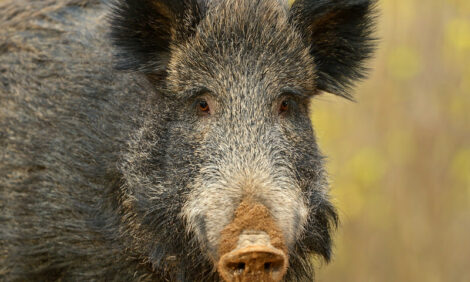



Market Preview: Livestock Records Series Revamped
US - Weekly U.S. Market Preview w/e 2nd March, provided by Steve R. Meyer, Ph.D., Paragon Economics, Inc.Iowa State University's (ISU) Estimated Costs and Returns to various livestock feeding enterprises have been a valuable source of cost and profit data for many, many years. Started in the 1960s by the late Dr. Gene Futtrell, the estimates provide consistent comparisons that over the short run capture the changing impact of major input and output prices. The challenge has always been keeping the estimates "representative" of current technology and incorporating accurate values for fixed costs, labor, non-feed variable costs, etc.
The series' current author, Dr. John Lawrence, and his staff recently completed a major overhaul of the estimates and the changes had a significant impact. This business has changed dramatically since the last set of assumptions was created. Consider that the assumptions for the farrow-to-finish series were for a 150-sow, single-site operation. While there are still some of those types of operations around, they are definitely not the norm and represent a very small portion of the industry.
The new series is based on a 1,200-head sow herd with modern buildings and equipment and modern facilities for pigs weaned at 17 days of age and then placed in grow-finish buildings for 165 days. Litter size has been increased to nine pigs weaned and market weights have been increased to 270 lb. For farrow-to-feeder pig operations, weaned pigs spend six weeks in a nursery and are then sold as 50-lb. feeders. Feed efficiencies and diets have also been updated and operating and overhead costs have all been adjusted to more modern levels. An example of the drastic change: The old series used a wage rate of $7/hour, while the new series uses $22/hour, benefits included.
A detailed description of the new assumptions, and a comparison of costs and returns since 2001 can be found here
Dramatic Changes in Returns
Figure 1 is drawn from this report and demonstrates the huge differences in profitability that these changes make. The average return on the old assumptions over the 2001-2006 period was $9.22/head. The average return using the new assumptions is $27.12/head. So while the old series told us that hog production has been profitable, it appears that the true numbers for modern operations are far more impressive. Any further questions about why we have seen such dramatic changes in operation size and structure?

Impact of Feed Prices on Returns
Dr. Lawrence used the new assumptions for both hog and cattle enterprises to address another burning question: What will be the impact of increasing feed prices on costs and returns? The results of that work appear in Figure 2. Note that the ISU researchers only computed the feed and total cost numbers in this table. I computed the percentage change data.

Both of those scenarios result in costs even higher than those that have been observed in January 2007, and costs that are roughly equivalent to those of 1996 -- the last time we dealt with expensive grain in the United. States. The difference is that this high-cost episode appears destined to last much longer than did that of 1996, thus meaning that cost increases eventually must be passed along to consumers.
The other telling figures from this table are the relative sizes of the increases for hog and cattle enterprises. While feed costs actually increase more as a percentage of 2001-2006 for the cattle enterprises, total costs increase substantially less than do those for hog enterprises. The reason, of course, is that a portion of the higher feed costs are deducted from the price of feeder cattle.
Hog production costs increase 13-23% under the two "forecast" scenarios while fed cattle costs increase by 6-11%. The reason is that the cattle-feeding industry uses far less soybean meal and can more effectively use dried distiller's grains with solubles (DDGS). The difference in these percentages underscores one of my biggest concerns about the impact of subsidized and protected ethanol production: It provides a competitive advantage to beef that will be very difficult to overcome.










